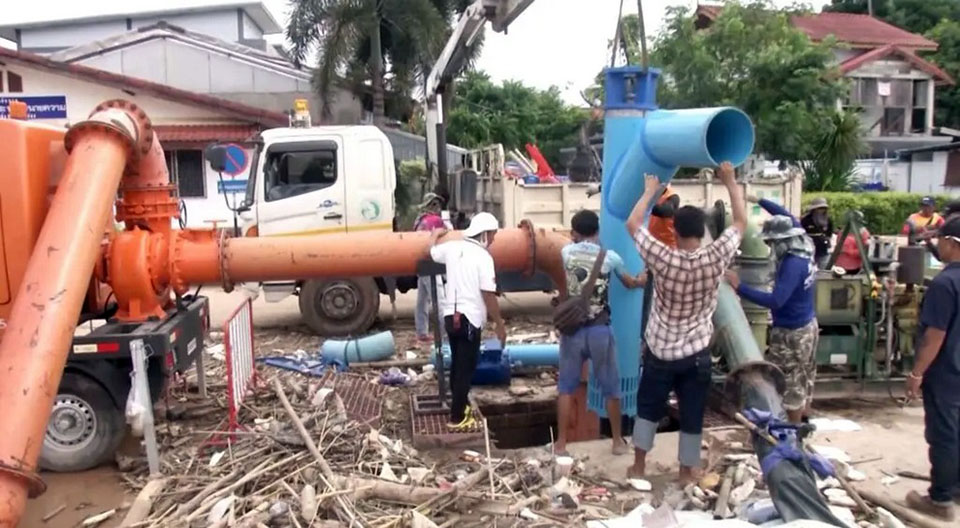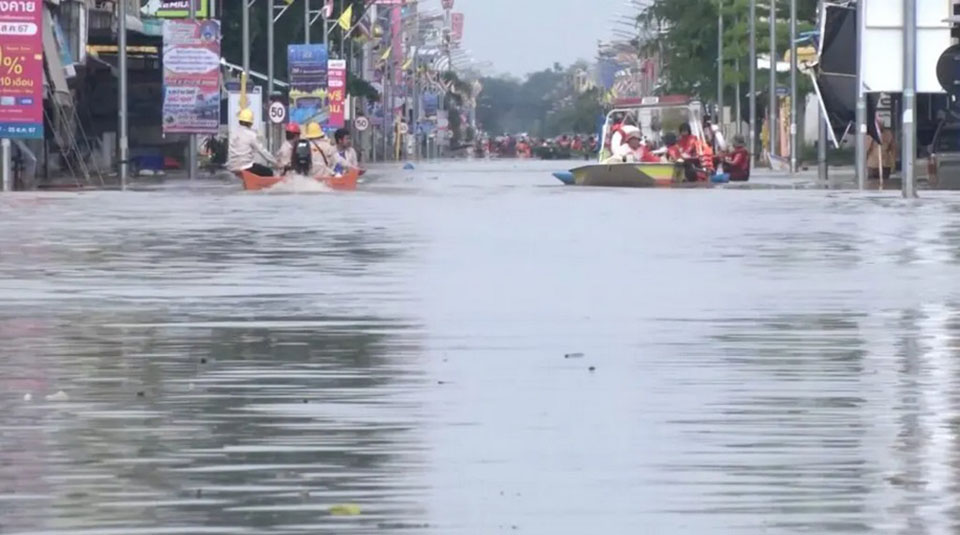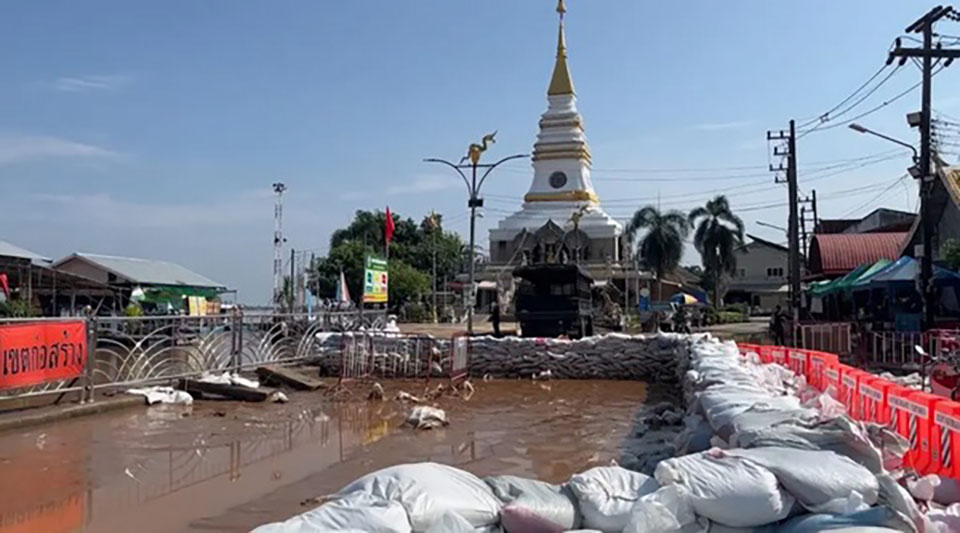
NONG KHAI, Thailand – (TNA) – The innovative “Naga Pipe” water pump, which gained fame during the 2018 Tham Luang cave rescue, has arrived in Nong Khai province on Sep 18 to assist with severe flooding that has submerged parts of the city for four days.
As the Mekong River overflow enters its sixth day, affecting six riverside districts in Nong Khai, the overall situation is gradually improving. However, the economic center of Nong Khai city, including Prajaksilpakom and Meechai roads, remains underwater, causing mounting damage to local businesses.
A textile handicraft shop opposite the Nong Khai City Municipality managed to evacuate their fabrics in time, but suffered significant damage to wooden furniture. The owner can only accept the situation, recognizing it as a natural disaster. They expressed deep gratitude for the outpouring of support from Thai people across the country who have come to aid Nong Khai residents.
Water levels have dropped below 13 meters but remain in the “red flag” zone, still exceeding the riverbank by less than 70 centimeters. This decline allows for the opening of the first floodgates and more efficient pump operations.

The arrival of the “Naga Pipe” turbo jet pump system, brought by Naphon Niyomka community leader from Ban Laem, Phetchaburi province, marks a significant boost to flood relief efforts. The system includes three 8-inch pipes and one 14-inch pipe, with the largest capable of pumping 2 million liters per hour.
“This is the world’s best water pumping innovation,” he claimed, expressing confidence that Nong Khai city center would be dry within the night.
Meanwhile, erosion has caused cracks in the riverfront road near Phra That La Nong, prompting local authorities to close it to traffic. Divers discovered that two-thirds of the soil beneath has been eroded. The municipality plans to expedite repairs once water levels recede further.
Local residents express concern about the nearby Phra That La Nong, a replica of the original pagoda that collapsed into the Mekong 177 years ago due to erosion. The remains of the original structure, now known as the “Pagoda in the Middle of the River,” are visible only during the dry season, about 180 meters from the Thai shore. (TNA)









